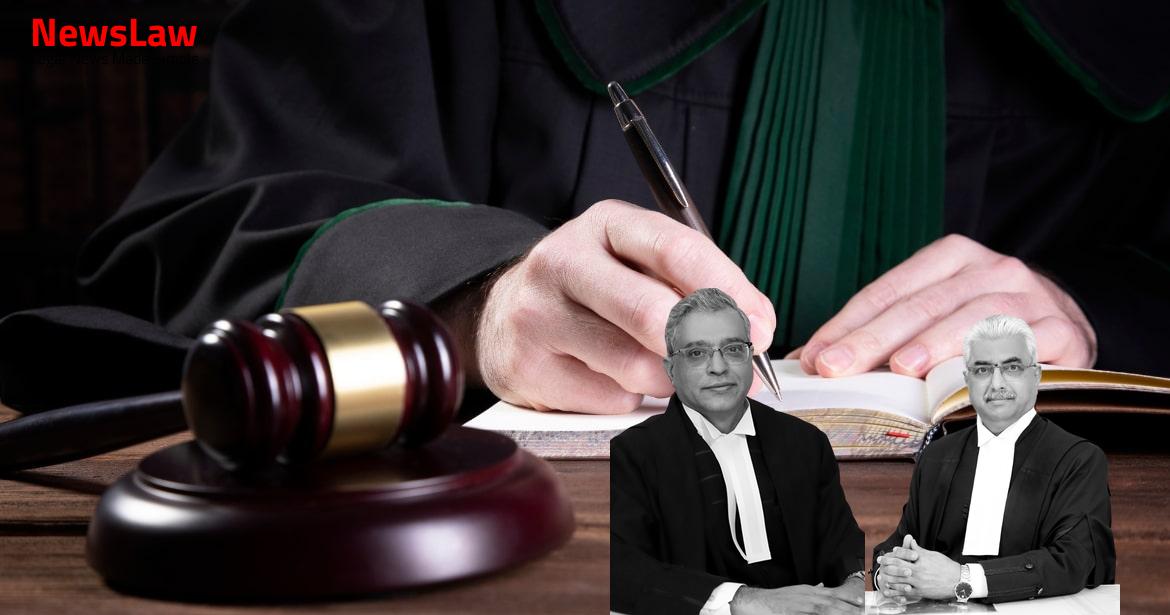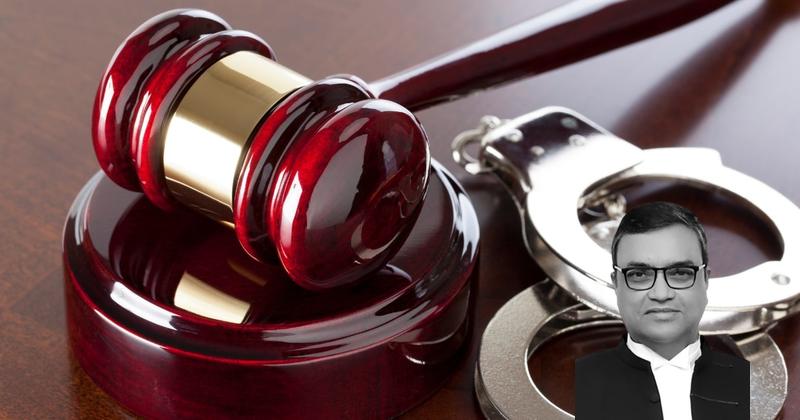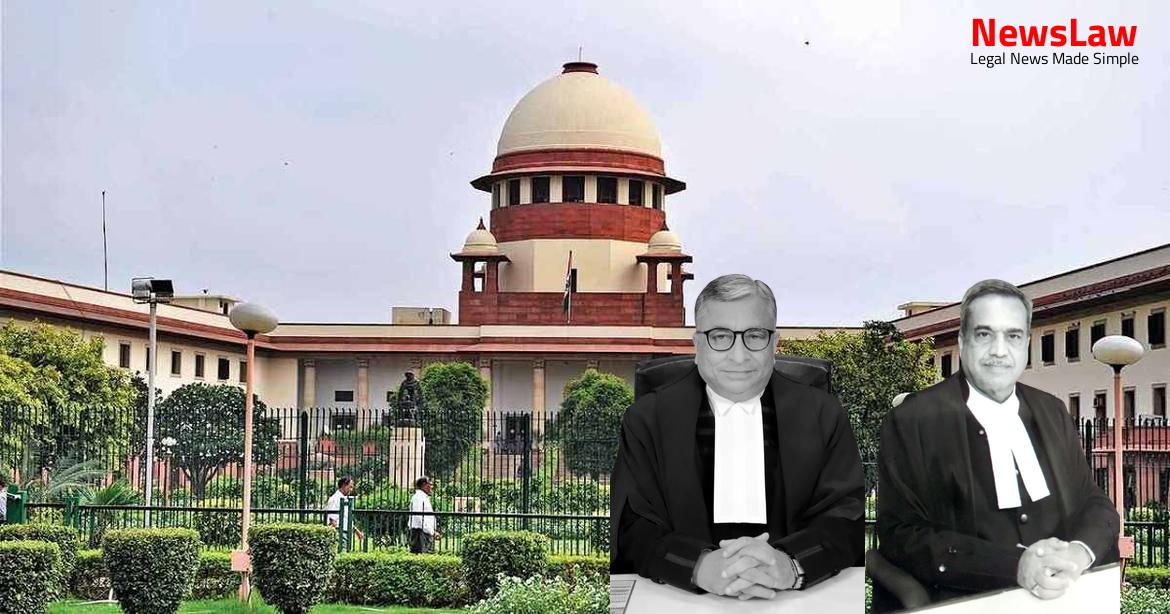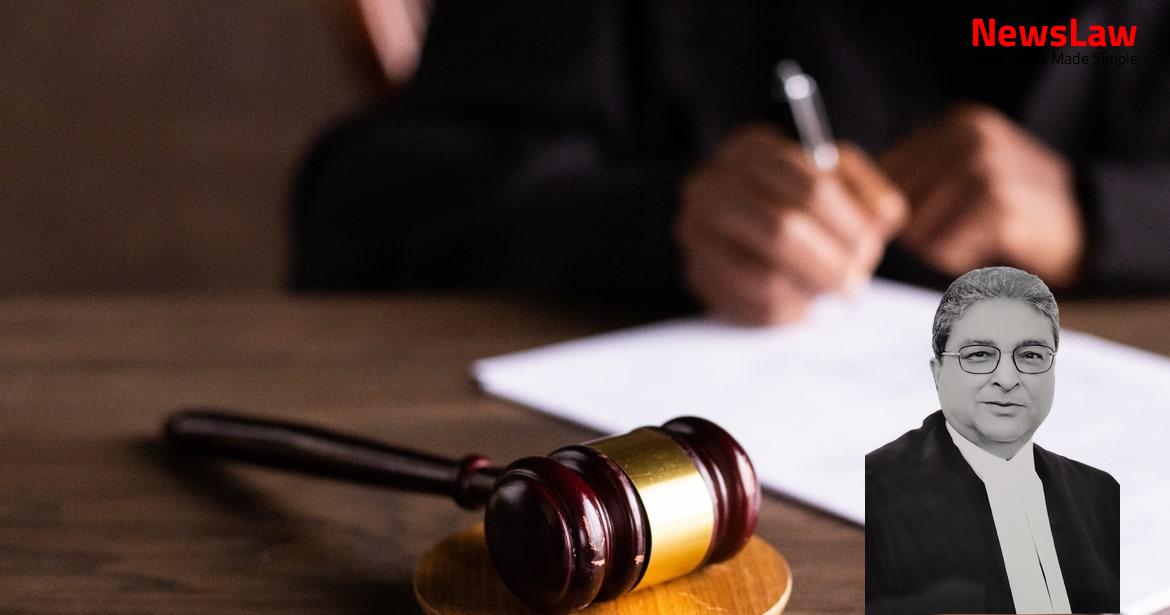Explore the intricacies of a recent Civil Appeal case where the High Court’s insightful legal analysis played a pivotal role in determining the outcome. The Court’s focus on evidence, burden of proof, and standards of proof sheds light on the nuances of civil litigation. Dive into the nuances of this case and gain valuable insights into the judicial process.
Facts
- The High Court considered the matter in detail and concluded that the title of the plaintiff over the property is well-established.
- The Trial Court dismissed the suit based on two grounds: lack of clear document of title in favor of the plaintiff and the suit being barred by limitation.
- The High Court held that the suit is within the period of limitation and noted that the question of limitation was not pressed by the Government before the Trial Court.
- Ms. Ruchira Gupta, who represented the case, was well-prepared on law and fact, providing a detailed list of dates and relevant portions of pleadings and documents.
Also Read: Clarification on Advertisement for Lecturer Post in Home Science
Arguments
- The petitioner pointed out the findings of fact as arrived by the Trial Court.
- She argued that the High Court wrongly shifted the burden of proof onto the State (defendant) instead of requiring the plaintiff to prove its title.
- She further contended that the High Court erred in asking for proof of possession of the property rather than proof of title, which is the main inquiry in a suit for declaration.
- She referred to precedents from the Court in support of her submission, including Sebastiao Luis Fernandes (Dead) through LRs. v. K.V.P. Shastri (Dead) through LRs. and Union of India v. Vasavi Cooperative Housing Society Limited.
Also Read: Judicial Review of Administrative Actions in Educational Matters
Analysis
- Ms. Ruchira pointed out that the documents relied on by the plaintiff did not assert the existence of title.
- The burden of proof was adequately met by the plaintiff through evidence.
- The High Court made its findings based on sufficiency of evidence.
- In civil cases, the standard of proof is by preponderance of probability.
- Distinction between burden of proof and standard of proof is crucial.
- Evidence adduced and proved by the plaintiff alone was considered.
- High Court did not rely solely on lack of evidence by the State to establish title.
- No single document by itself concluded title for the plaintiff.
- High Court correctly reevaluated facts and evidence in exercising first appellate jurisdiction.
- Plea of limitation was examined by the High Court and determined to be within the period.
- Ms. Ruchira Gupta’s submission was about standard of proof, not burden of proof.
- High Court referred to multiple pieces of evidence to establish plaintiff’s title.
- The High Court correctly arrived at its conclusion regarding the existence of title in favor of the plaintiff
- The conclusion was based on the evidence adduced during the case
Also Read: Scope of Rule-Making Power in Disciplinary Proceedings
Decision
- Civil Appeal arises from the judgment of the High Court in First Appeal No. 282 of 2007 dated 21.10.2010
- The Civil Appeal has been dismissed as per the decision
- The High Court’s decision from 2010 stands
Case Title: GOVT.OF GOA TR.CHIEF SEC. Vs. MARIA JULIETA DSOUZA (D) (2024 INSC 88)
Case Number: C.A. No.-000722-000722 / 2016



